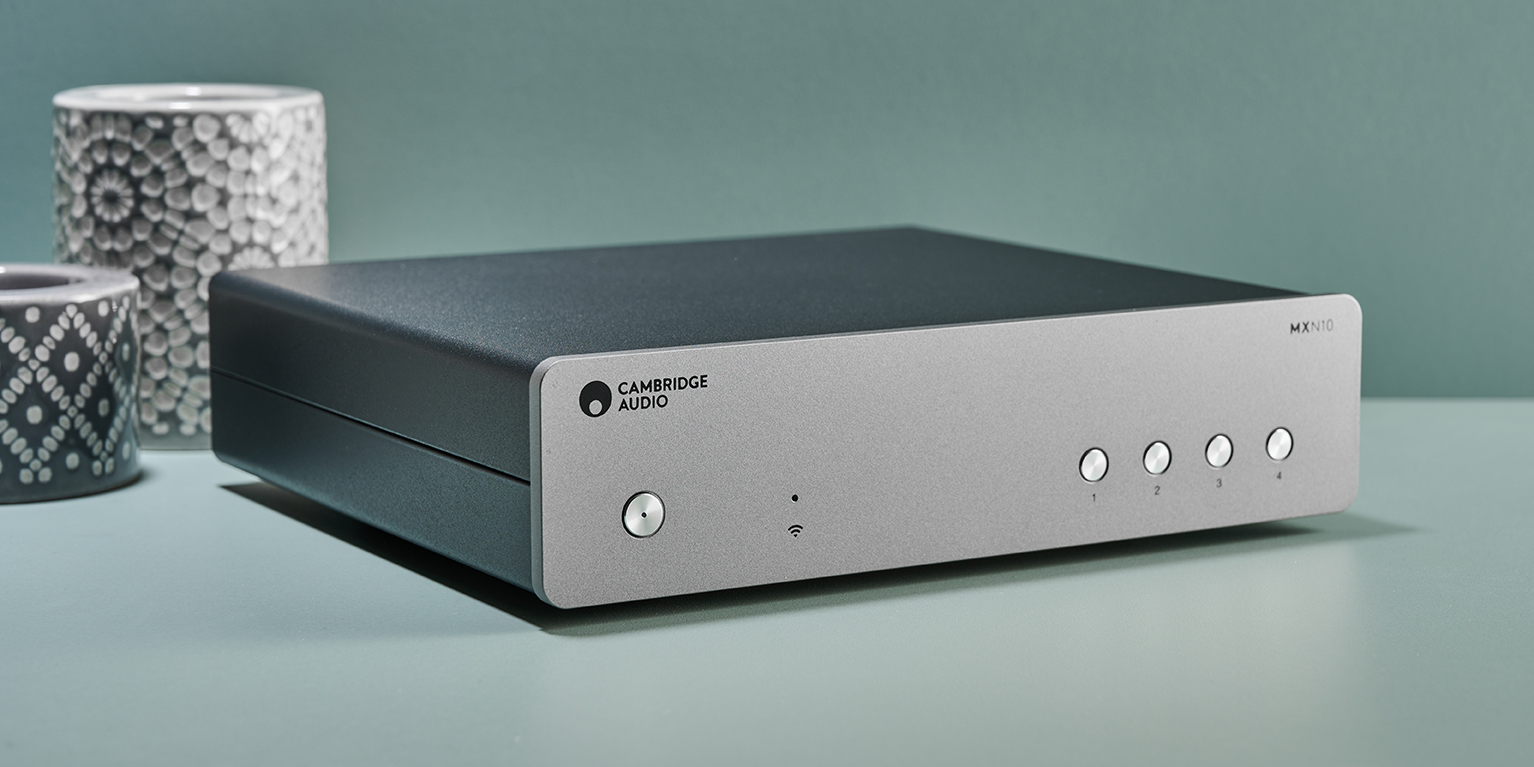
Anyone who’s taken even the slightest interest in wireless music streaming over the past few years knows the name Cambridge Audio. The company has very little to prove where audio streaming is concerned - and with the diminutive MXN10 it wants to bring music streaming to legacy audio systems everywhere at a more aggressive price than it’s ever managed before. Quite a big ask, then, eh?
Cambridge Audio MXN10: Price & Availability
The Cambridge Audio MXN10 is on sale now, and in the United Kingdom it goes for £449. In the United States you’ll have to pay $499. Meanwhile, in Australia, it sells for AU$899.
This is competitive money for a full-on digital audio streamer (even a smaller-than-average one) - although the more recently launched WiiM Pro Plus undercuts it more than somewhat. But it’s the most affordable music streamer Cambridge Audio has turned out so far, and provenance like this isn’t easy to come by.
Cambridge Audio MXN10 review: What's new?
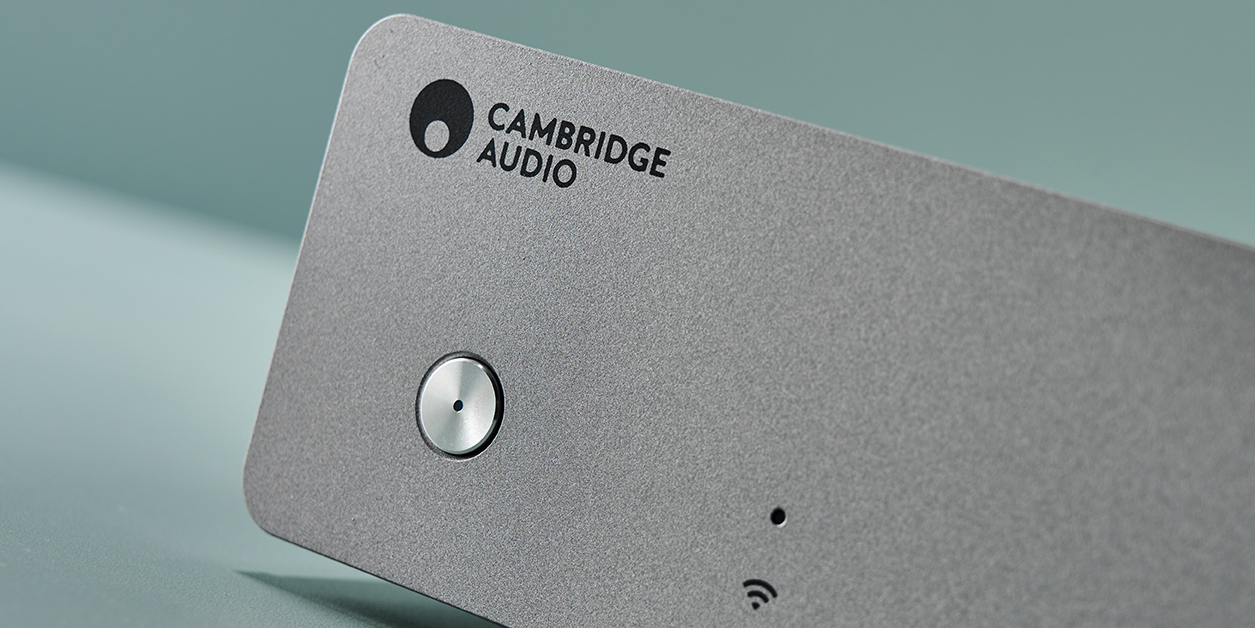
Never judge a book (or one of the best music streaming DACs) by its cover. The MXN10 may be small and visually featureless - but it’s not exactly short of features.
Under the hood, business is taken care of by an ESS Sabre ES9033Q DAC that’s capable of dealing with digital audio files of up to 32bit/784kHz and DSD512 resolution. It’s able to deal with popular file types (MP3, ALAC, FLAC, WAV and so on) - plus a number of unpopular ones if that’s what you’re into. There’s no MQA decoder on board, though, which may prove mildly vexatious to some prospective customers.
The outside of the MXN10 is almost entirely featureless. There’s a power button, and four buttons that can each be assigned as a preset shortcut - presets might be radio stations, playlists or what-have-you.
On the rear panel, there are a couple of wireless aerials (for dual-band Wi-Fi and Bluetooth 5.0 with just SBC and AAC codec compatibility), an Ethernet socket and a USB-A slot for use with mass-storage devices. Outputs run to a pair of analogue stereo RCAs, digital optical and digital coaxial sockets.
Cambridge Audio MXN10 review: Performance
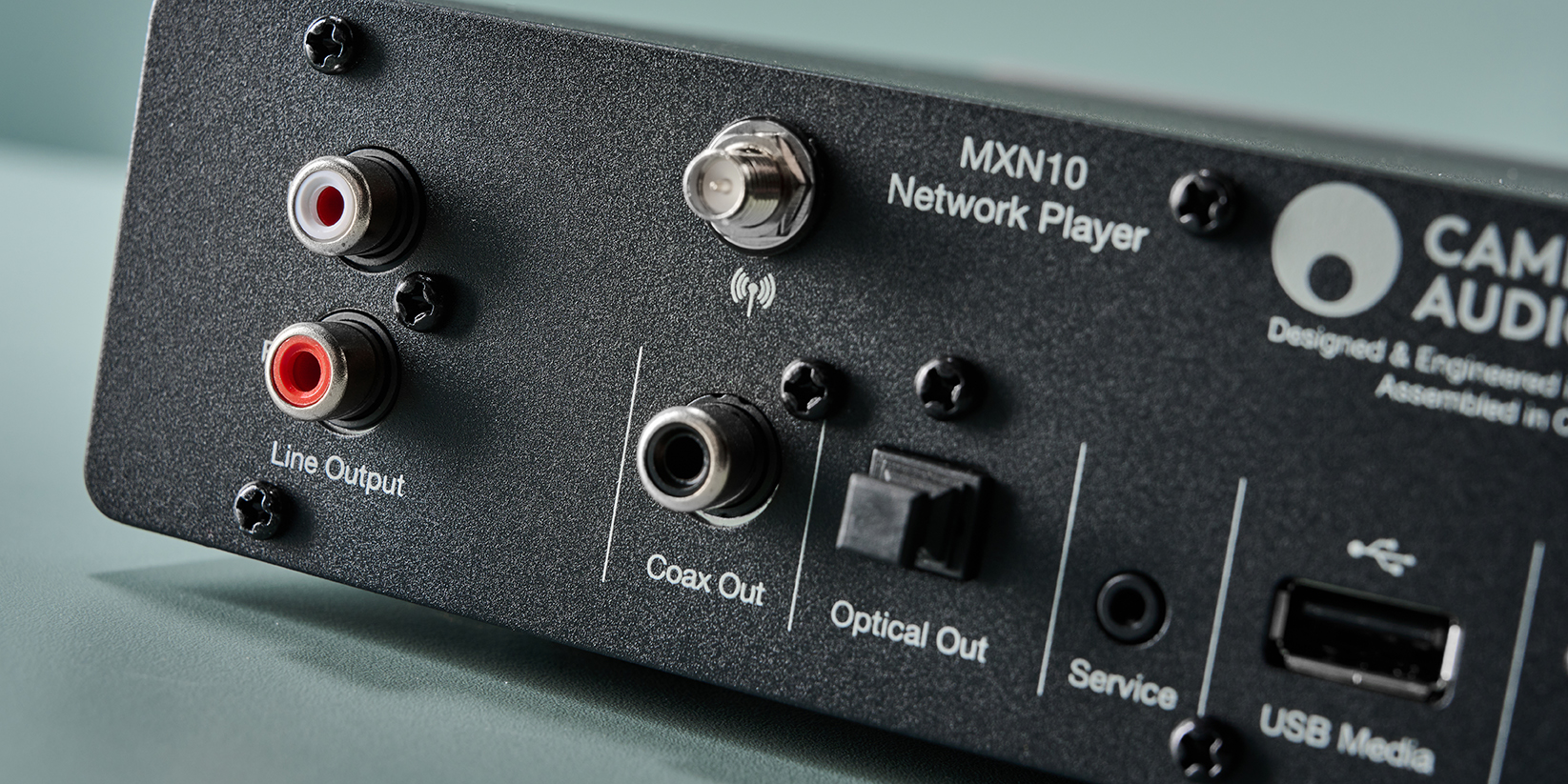
First things first: unlike quite a few music streamers that (metaphorically) fall to pieces when asked to deal with compressed, lossy audio content from the likes of Apple Music or Spotify, the MXN10 simply tries to make the best of it. That’s not to say it doesn’t do its best work when given the best stuff to work with - it does, of course - but it’s not judgey.
To hear it at its best, though, it’s asked to deal with some 24bit/192kHz content from Qobuz and Tidal, as well as some DSD128 content from a local network-attached storage device. And the results are, to put it bluntly, really bloody impressive.
Low-frequency presence, for instance, is considerable. Bass sounds are deep and textured, straight-edged in their attack and properly managed where decay is concerned. As a knock-on effect, rhythmic expression is always convincing, and momentum is always high.
Move up to the mid-range and detail levels remain gratifyingly high. Unlike some less poised streamers, the MXN10 doesn’t push the mid-range to the front of the stage. Instead it keeps its balance neutral and natural, and manages to give a vocalist plenty of space in which to do their thing without compromising the layout of the soundstage it creates. Frequency response is clean from top to bottom, and a singer gets to articulate fully while still remaining part of a unified, singular performance.
Treble sounds are played slightly safe, it’s fair to say - there’s not quite the crunch or shine some (admittedly more expensive) alternative designs can muster. The Cambridge Audio sounds just slightly polite at the top of the frequency range - in most circumstances this will constitute a trait rather than a flaw, but if you’re thinking of adding the MXN10 to a system that’s slightly shy at the top of the frequency range you’ll need to give it a thorough audition first.
The rest of the news, though, is uncomplicatedly good. There’s ample dynamic headroom, more than enough to track the big changes in intensity especially apparent in classical music, and the Cambridge Audio is alive to more minor, but no less significant, changes in harmonics too.
In short, the MXN10 is a robust, entertaining, energetic and forthcoming listen, and will complement the vast majority of systems into which it is introduced.
Cambridge Audio MXN10 review: Design & Usability
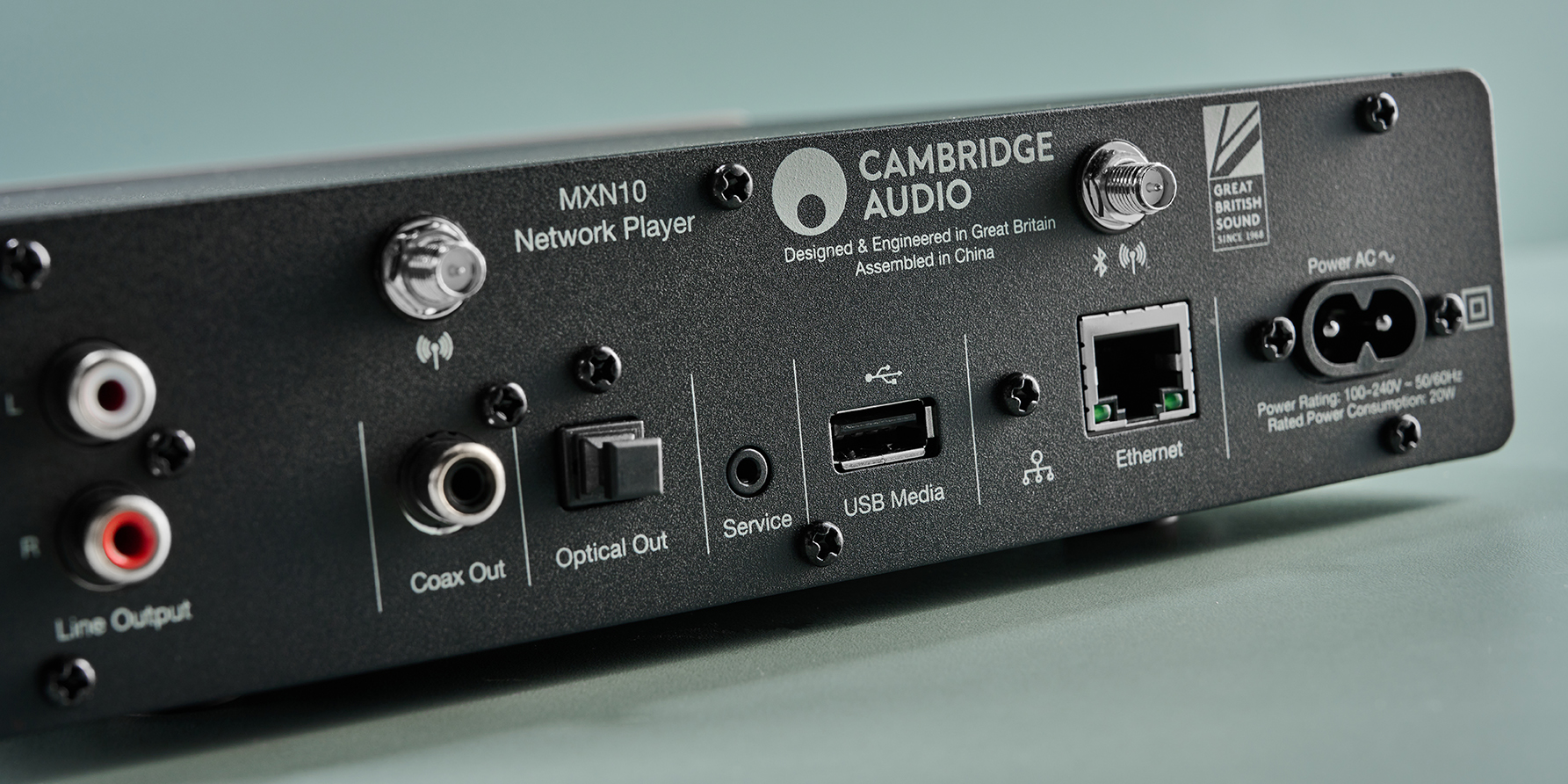
Have you ever encountered any of Cambridge Audio’s (very successful) ranges of DACs or phono stages? If so, the 52 x 215 x 191mm (HxWxD) of the MXN10’s casework will seem very familiar.
These discreet dimensions make the MXN10 ideal for use either as part of a full-scale legacy hi-fi system, or as a source for a wireless speaker. Aside from mains power, there’s every chance you’ll never need to use any of its physical inputs - and so it shouldn’t be all that tricky to find a spot in which to place it.
The Lunar Grey finish is basically standard across the entire Cambridge Audio range, so (unless you scored one of the recent limited-edition components in a black finish) the MXN10 will look harmonious in your system. As long as it’s a Cambridge Audio system, of course.
Control is almost entirely down to the fourth generation of Cambridge Audio’s StreamMagic control app. It allows you access to internet radio, Spotify Connect, Deezer, Qobuz and Tidal Connect. Chromecast and Apple Airplay 2 are built in, and the MXN10 is both UPnP-compatible and Roon Ready. The app also lets you check for firmware updates, define the function of those four preset buttons, adjust the length of time the MXN10 should stay powered up when it’s not receiving a signal, and other niceties.
To control volume levels, you’ll either need to use the native app of the streaming service you’re listening to, or (if it’s hooked to an amplifier via its analogue outputs) switch the MXN10 into ‘pre-amp’ mode in order to adjust volume using the app. This isn’t possible if you’re bypassing the Cambridge Audio’s DAC and making a digital connection to your system.
Cambridge Audio MXN10 review: Verdict
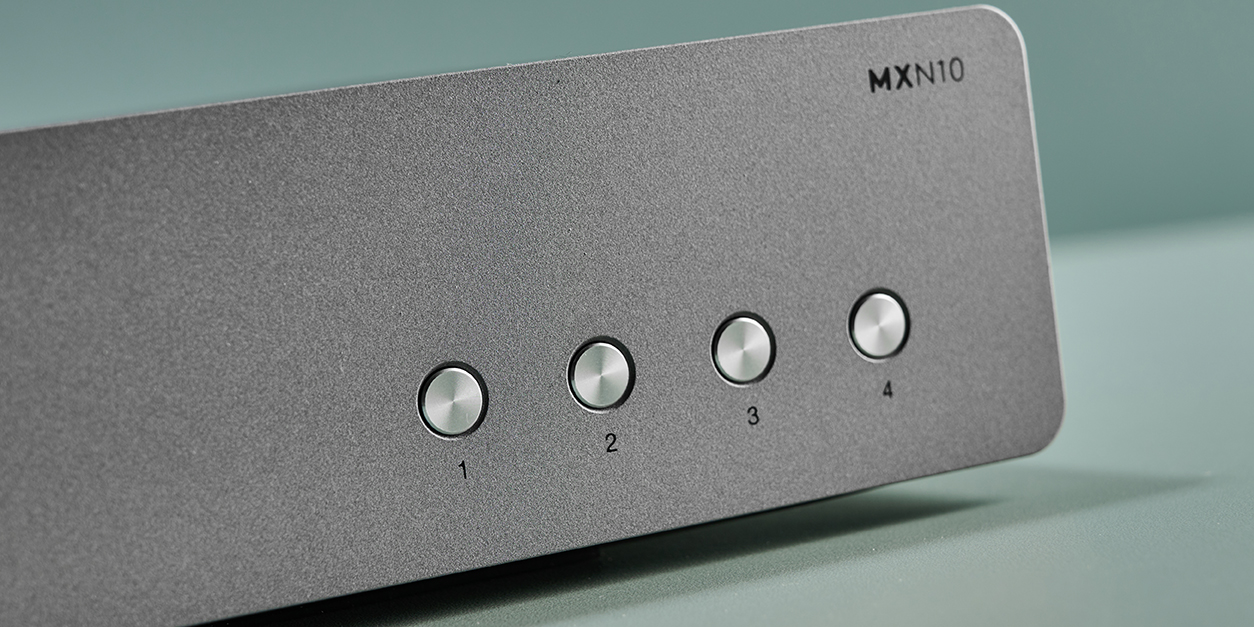
Turn your existing audio system into a full-on music streaming system easily, relatively affordably, and with deeply enjoyable results. That's what makes the Cambridge Audio MXN10 music streaming magic.
But is anyone startled to find a Cambridge Audio music streamer that performs really well and offers great value for money? No? Didn’t think so. The story would have been much more compelling if the MXN10 had turned out to have significant deficiencies - but unless you’re an MQA fetishist, that simply isn't the case.
Also consider
The WiiM Pro Plus is even smaller and more affordable than the MXN10 - and while it’s not as tactile, its control app is every bit as good. The sound it makes is slightly small-scale compared to the MXN10, it’s true - but that doesn’t mean the WiiM isn’t the perfect toe in the water for anyone who’s curious-yet-trepidatious about music streaming.







